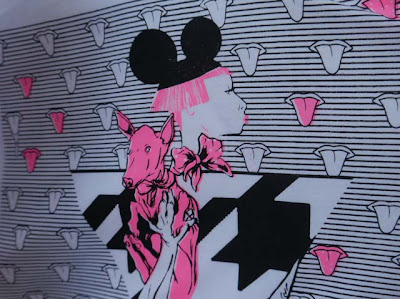Here is a project that I worked on recently with Kevin Staniec at Black Hill Press. Kevin called me several months ago to ask if I would like to collaborate on a series of book covers for one of their series (of books). Black Hill Press is an independent publishing house dedicated to the novella - a distinctive, mid-length fiction. Part of the reason why I chose to collaborate was because of my own interest in writing; I've not been formally trained in the craft, and really my doing so, was for my own pleasure. Initially, I was intending to only post the final covers, but then decided midway through preparing the files to upload online, that I wanted to show some of the process as well. Much of my blog is devoted to the creative process that I experience in my studio, the psychological, emotional and critical challenges that I face through my art-making. However, this time I thought it would be interesting to share some of the lead-up sketches and preparatory drawings that I created up to, and including the final illustrations. Kevin and I spoke a good amount about each of the stories, and our dialogue helped shift and guide my approach to the covers. Although I did not read the novellas in their entirety, it was still important that each one of the images be endowed with its own "spirit," while still being connected to one another. As an Illustrator, I believe it's paramount to be aware of those qualities about one's work that makes it special and stand out from his/her peers. In my case, I know that colour, a graphic composition, and creating patterns through the repetition of shapes and objects have become my visual communicators. The challenge then, was how to let go enough and to brainstorm in way that would make the images convey a kind of genuine feeling, rather than seeming as though they were formulaically constructed based on the conversations that Kevin and I had about each cover, as well as the judgements that I had about my own work. When I begin a project, I go into a kind of free fall, (thumbnail) sketching every idea onto the page, while still being very aware of what I am visually trying to communicate - yeah, I'm free-falling but I still keep an eye out for where I'm supposed to land. It's a conceptual purge in a way, and for me, speed is important, so is rhythm, and so I have to use a tool such as a marker to draw at this stage. This method gives a heavy nod to automatic drawing, ala the Surrealists, not necessarily having one's subconscious inform the marks that one makes, but rather allowing oneself to freely draw without judging or editing oneself. Eventually, I have to trust myself enough to know that even though it may seem like a struggle moving towards the final destination, I understand that as I continue to draw, I will eventually arrive to the right place.










































